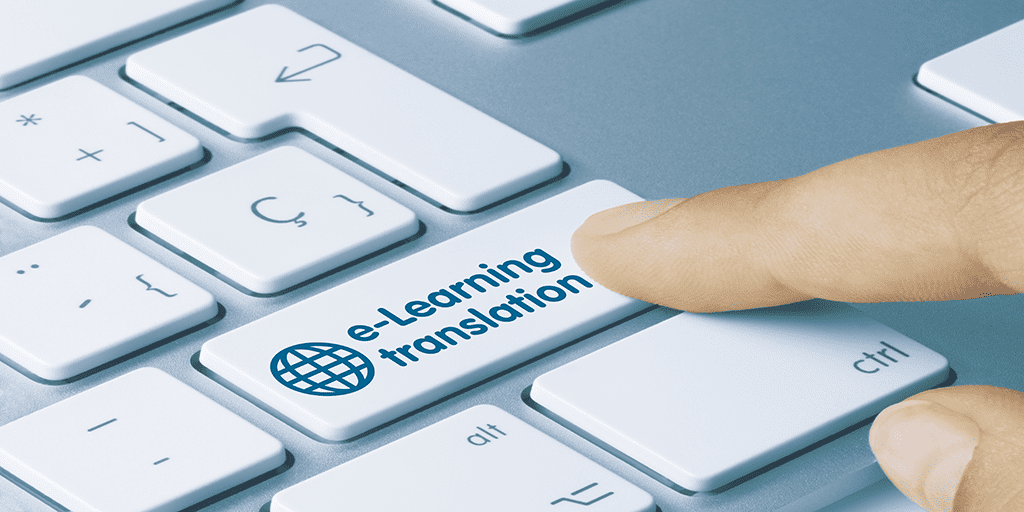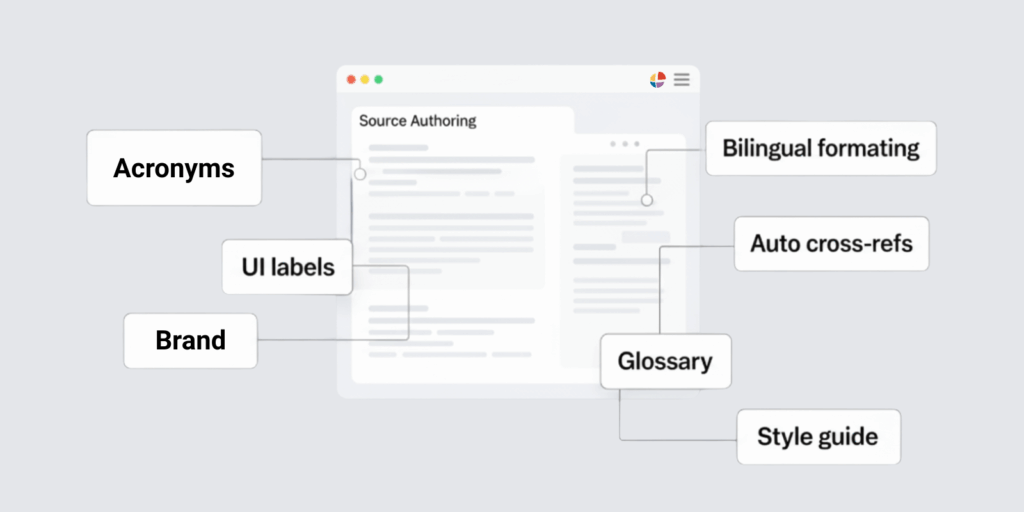
Is your company growing globally? Are you looking for ways to train your employees efficiently and with increased cultural relevancy? Chances are, your company has already started implementing eLearning in some capacity. Most companies produce eLearning in English initially. That makes sense if you consider the fact that it is estimated that 1.5 billion people speak English around the world.
However, most of those speakers are non-native English speakers. That means that the vast majority of people are likely to be more comfortable speaking another language. To prioritize the satisfaction of employees and customers, companies are investigating eLearning translation. In order to maximize communication, culture relevancy, and quality assurance, companies will want to partner with a professional eLearning translation company to take their content to the next level.
Why translate eLearning?
No one is denying that English is spoken all over the world. Still, that does not mean that everyone is fluent or most comfortable learning in English. This consideration is especially important as more companies are employing a global workforce. The purpose of eLearning is to provide right-now information in a way that meets a variety of learners’ needs and preferences. To really maximize all that eLearning has to offer, delivering that content into a variety of languages is essential. By only offering eLearning in one language, companies are hindering the benefits. Translated materials reduce the effective filter and improve comprehensible input and output. This means that learners will be more comfortable and more receptive to the learning. Companies whose employees feel valued and respected report greater employee retention and increased morale. This atmosphere is a boon not only to companies and employees, but to customers as well.

In addition to being what is best for learners, it is important to translate eLearning material for other reasons. By accurately translating your eLearning materials, effective new employee training can begin almost immediately. Additionally, translated materials mean that your company is less likely to need someone who can train employees in each country from which you hire. Using on-site trainers can be both costly and lead to inconsistencies. Instead, translated materials share information uniformly with all employees and are available on demand with each new hire. Certainly, translated eLearning materials improves efficiency and can come with considerable financial benefits as well.
What makes professional eLearning translation stand out?
The benefits of eLearning translation are clear. Professional translation stands out because of the skilled team that carries out the translation with layers of quality assurance.
Professional eLearning translation companies use in-country translators. In-country translators have the ability to understand the nuances of the target language. When nuances aren’t understood, the results can range from humorous to disastrous. Take this moment in presidential history for instance: President Jimmy Carter once gave a speech when he traveled overseas, stating that he had left the United States. His proclamation of temporary travels was mistranslated into him having left the United States permanently, never to return. This international snafu underscores the importance of nuance and precision when it comes to translating. A company’s eLearning content is too valuable to be left to “close enough.” Skilled in-country translators don’t just understand the target language, they understand the target culture. That means that these translators can ensure that supporting visuals, symbols, and gestures in your company’s eLearning content are culturally appropriate. Even if words are translated accurately, inaccurate, misaligned, or inappropriate symbols or gestures on screen can undermine the content. The translators employed by professional eLearning translation companies guarantee that translated content is accurate, meaningful, and appropriate.
Another benefit of eLearning translation is that it isn’t just focused on words. A professional translation company uses an in-house team for desktop publishing (DTP). That means that any multimedia aspects of eLearning will be displayed in visually appealing ways. An in-house team is familiar with the necessary layout adjustments that may need to be made in order to account for text expansion or contraction. That means formatting and font choice will complement the target language in terms of readability. By using a professional in-house DTP team, all of the elements of design will be preserved.
Another unmatched benefit of professional eLearning translation comes from the quality assurance. During this stage, the final translated content is reviewed in its final published environment. A native speaker will engage with the eLearning materials in the same way that all of your employees will. This step ensures that there is a parallel experience between the original material and the translated content.
Final Thoughts
The effectiveness of eLearning is undeniable. However, leaving eLearning materials in a single language diminishes much of that effectiveness. While a company may be inclined to use translation shortcuts, working with a skilled team of professionals is worth it. A professional team ensures that all of your materials are accurately translated and paired with effective and visually-appealing graphics. When it comes to reaping all of the benefits of translation, a professional eLearning translation company stands out above any other option.
Category: Translation
Tags: ELearning translation, Elearning, Elearning Content
Service: eLearning Translation
Industry: Education, Learning and Development
Don't forget to share this post!
Stay Updated with Interpro
Subscribe to our newsletter for the latest updates and insights in translation and localization.






